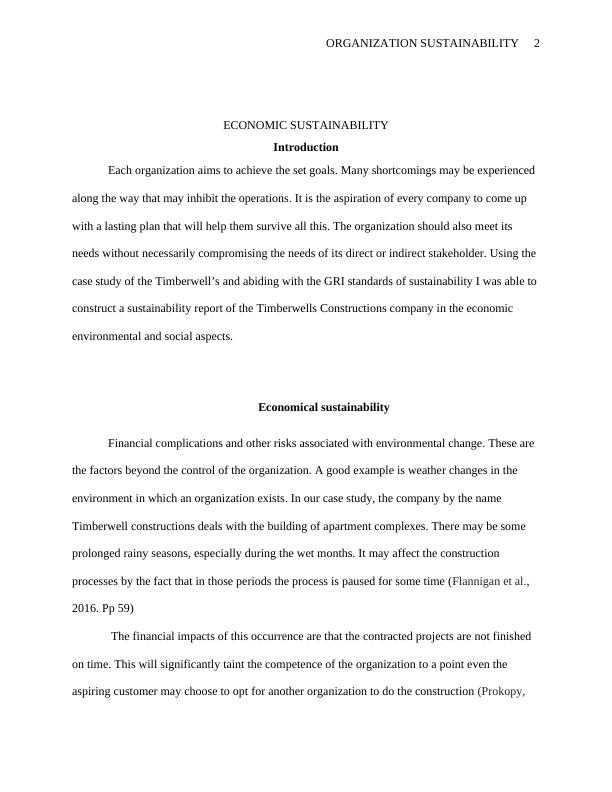Organizational Sustainability: Economic, Environmental, and Social Aspects
Prepare a sustainability assessment report based on GRI Sustainability Reporting Standards, addressing economic and environmental sustainability.
11 Pages2959 Words173 Views
Added on 2023-06-03
About This Document
This report discusses the economic, environmental, and social sustainability aspects of Timberwell Constructions company. It covers financial complications, environmental conservation measures, and human resource management. The report also highlights the impacts of the company's activities on the local community and the measures taken to prevent future occurrences of discrimination and corruption.
Organizational Sustainability: Economic, Environmental, and Social Aspects
Prepare a sustainability assessment report based on GRI Sustainability Reporting Standards, addressing economic and environmental sustainability.
Added on 2023-06-03
ShareRelated Documents
End of preview
Want to access all the pages? Upload your documents or become a member.
GOVERNANCE, ETHICS, AND SUSTAINABILITY (A sustainability assessment on Timberwell constructions) Name of the university Student ID Code
|12
|3181
|472
Sustainability Assessment Report for Timberwell Constructions
|10
|2446
|312
Corporate Governance and Ethics: Assessment of Sustainability Reporting Standards of GRI
|11
|2168
|288
Sustainability Assessment Report for Timberwell Constructions
|10
|2812
|52
Governance, Ethics and Sustainability: Sustainability Assessment Report
|11
|2725
|281
Sustainability Assessment: Timberwell Constructions
|14
|3004
|88




